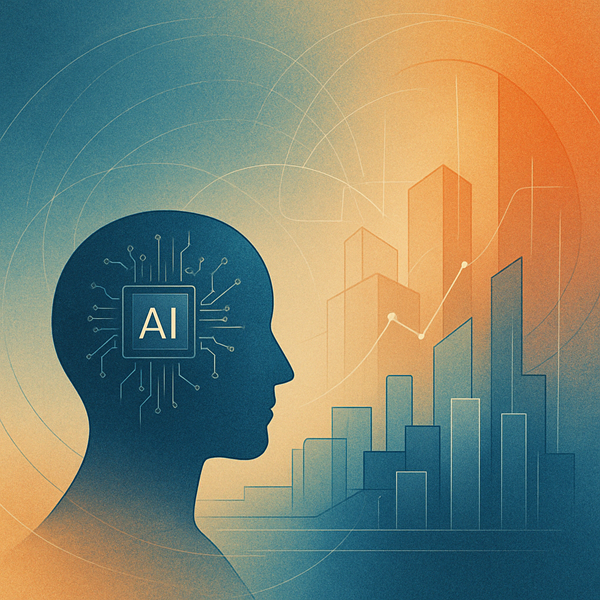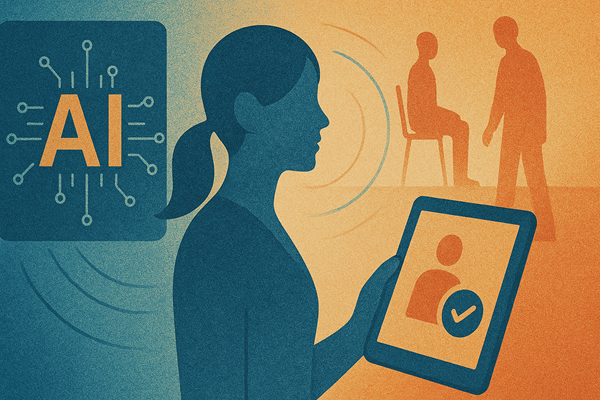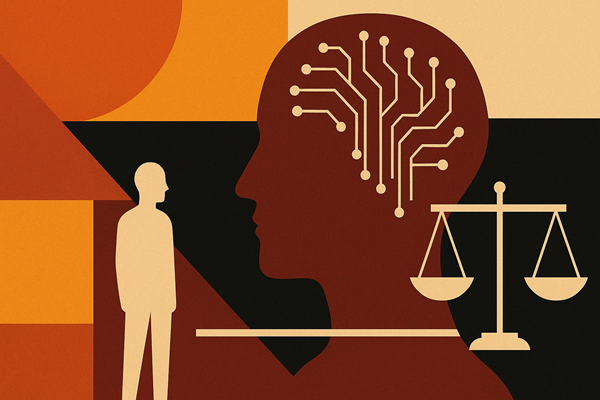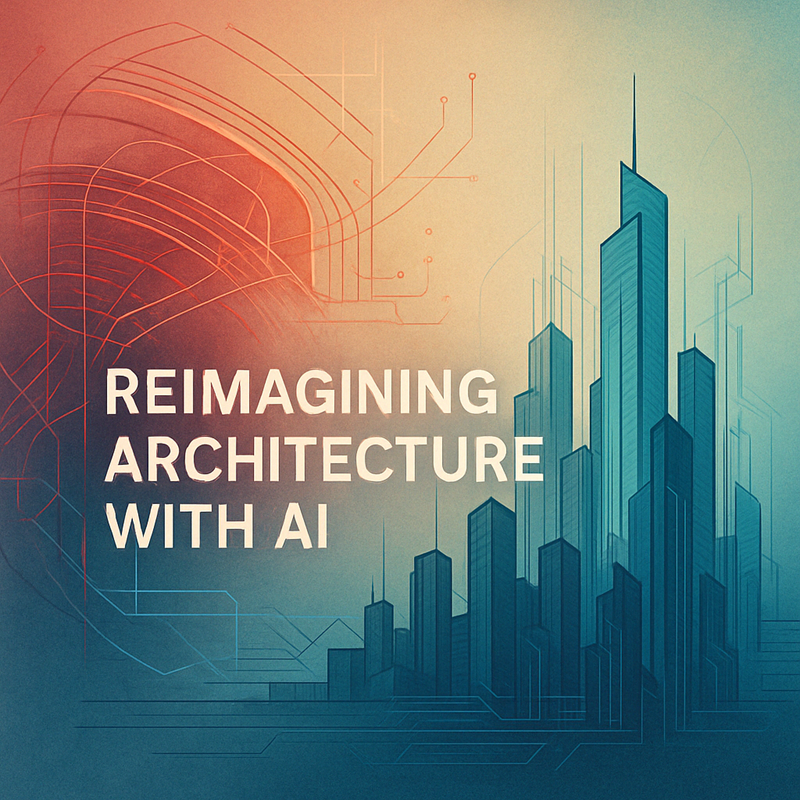Introduction
In the evolving landscape of technology and innovation, Artificial Intelligence (AI) has emerged as a transformative force across industries. From automating repetitive tasks to generating intelligent predictions, AI is redefining how we interact with the world. Architecture, a field traditionally rooted in creativity, materiality, and human experience, is now embracing the power of AI to reimagine the design process, enhance sustainability, and shape smarter urban environments. This article explores how AI is revolutionising architecture, the benefits and challenges it presents, and what the future might hold for architects, designers, and the built environment.
The Role of AI in Architectural Design
AI in architecture is not merely a tool for automation—it is becoming a co-creator, an analytical partner, and a decision-making guide. With capabilities in data processing, machine learning, and pattern recognition, AI enhances various phases of architectural practice, from conceptual design to post-occupancy analysis.

1. Generative Design and Form Finding
One of the most exciting uses of AI in architecture is in generative design, where algorithms generate multiple design options based on defined parameters such as site conditions, climate data, material usage, and user needs. Architects input constraints and goals, and the AI engine produces design iterations that may not have been considered through traditional processes.
For example, Autodesk’s Generative Design tool allows users to explore thousands of permutations of a design problem, rapidly testing different spatial layouts, structural systems, and environmental strategies. This not only accelerates the design process but can also lead to more innovative and optimised architectural forms.
2. AI-Driven Visualisation
AI-powered tools are also transforming how architects visualise and communicate their ideas. Programmes like DALL·E, Midjourney, and Lumion AI assist in creating hyper-realistic renders or conceptual imagery from textual prompts, enabling architects to iterate visual ideas quickly.
Furthermore, real-time rendering engines integrated with AI can simulate light behaviour, environmental conditions, and material textures, helping clients and stakeholders to better understand the spatial experience.
3. Smart Building Analysis and Environmental Performance
AI systems are particularly valuable in analysing energy performance, ventilation strategies, daylight access, and acoustic behaviour. Tools like Cove.Tool and Autodesk Insight use AI algorithms to predict how a building will perform environmentally and suggest design improvements early in the project lifecycle.
In sustainable architecture, AI aids in carbon footprint analysis, material lifecycle assessments, and optimisation of renewable energy sources. This data-driven approach is crucial in the global push towards net-zero and carbon-neutral buildings.
AI in the Construction and Building Lifecycle
AI is not limited to the design studio; it also plays a critical role in the construction and operation of buildings.
1. Construction Site Automation
AI technologies are streamlining construction processes by automating repetitive and hazardous tasks. Robotics powered by AI can perform tasks like bricklaying, concrete pouring, or steel fabrication with greater precision and speed.

Drones integrated with AI are used to monitor site progress, inspect structures, and ensure compliance with safety standards. Computer vision tools can identify potential hazards or quality issues in real time, reducing the risks associated with human oversight.
2. Predictive Maintenance and Smart Building Management
Post-construction, AI plays a vital role in managing building operations. Smart buildings are equipped with AI-driven systems that monitor energy consumption, detect system faults, and optimise usage patterns to reduce operational costs and improve user comfort.
Machine learning models can predict maintenance needs before equipment failure occurs, leading to longer building lifespans and better performance over time.
Enhancing Human-Centred Design with AI
Architecture is fundamentally about people—their habits, cultures, behaviours, and needs. AI offers tools to better understand and respond to these human factors.
1. Behavioural Modelling and Spatial Analysis
AI can analyse how people interact with built environments using data from sensors, GPS, and occupancy analytics. For example, in retail or office settings, AI can map foot traffic and identify underused spaces, allowing for data-informed redesigns that improve spatial efficiency.

Urban designers use AI to simulate how pedestrian flows and transport systems might behave under different design interventions, creating more inclusive and accessible public spaces.
2. Customisation and Personalisation
AI allows architects to move beyond one-size-fits-all solutions by supporting mass customisation. By learning from user data—such as thermal comfort preferences, daily routines, or accessibility needs—AI can help tailor architectural features to suit individual occupants or specific user groups.
This is particularly impactful in housing, healthcare, and educational settings, where user-centred design leads to improved well-being and outcomes.
The Role of AI in Urban Planning and Smart Cities
Beyond individual buildings, AI is shaping how we plan and manage entire urban environments.
1. Data-Driven Urban Planning
Cities generate vast amounts of data daily—on traffic, air quality, energy use, and more. AI can sift through this data to uncover patterns and inform better planning decisions. For example, planners can use AI to predict the impact of new developments on infrastructure demand, mobility, and emissions.
Cities like Singapore and Helsinki are using AI to simulate urban growth scenarios, test policy impacts, and optimise land use strategies.

2. Smart Infrastructure and Mobility
AI is critical in the development of intelligent transport systems, responsive traffic control, and automated public services. Integrating AI with the Internet of Things (IoT) enables cities to become more responsive to real-time needs—from adjusting street lighting to managing waste collection dynamically.
Architects and urban designers play a role in this by designing adaptive public spaces that interface seamlessly with smart systems.
Ethical Considerations and Challenges
While AI presents vast opportunities, it also raises critical ethical, social, and professional concerns.
1. Design Authorship and Creativity
As AI takes on more creative tasks, questions arise about authorship and originality. Can a design generated by an AI algorithm be considered the intellectual work of an architect? How should credit and copyright be handled when AI contributes significantly to the creative output?
While AI can augment creativity, it lacks the intuition, cultural sensitivity, and poetic understanding of space that human architects bring. Maintaining a balance between human ingenuity and machine assistance is vital.

2. Bias and Data Integrity
AI systems are only as good as the data they are trained on. If datasets contain biases—whether related to gender, race, income, or geography—AI could reinforce these inequalities in the built environment.
For instance, if AI models used in urban planning rely on historical data from exclusionary zoning practices, they might inadvertently promote segregation or gentrification. Architects must ensure transparency and equity in how AI is implemented.
3. Job Displacement and Skill Shifts
There is concern that AI could displace jobs in architecture, engineering, and construction. While some roles may be reduced, others will evolve. Architects will need to develop new skills in data analysis, coding, and human-AI collaboration to remain relevant.
The profession must redefine its value not as drawers of buildings but as critical thinkers, ethical stewards, and facilitators of human experience through the built form.
The Future of AI in Architecture
As AI continues to evolve, its integration into architecture will deepen, leading to profound shifts in how buildings and cities are conceived, constructed, and experienced.
1. AI-Generated Architecture
In the near future, we may see fully AI-generated buildings, where architects define goals and constraints, and AI develops both the design and documentation autonomously. This is already being piloted in modular housing and prefabrication, where repetitive elements lend themselves to automation.
2. Self-Learning Buildings
Smart buildings may become self-learning—adjusting their systems over time based on occupant behaviour, environmental changes, and energy goals. They might modify ventilation, lighting, or space usage autonomously, creating dynamic environments that continuously optimise performance.
3. AI as a Design Partner
AI is increasingly seen not as a replacement, but as a collaborator—a partner in the creative process. Just as CAD revolutionised drafting and BIM transformed documentation, AI will expand what architects can achieve by augmenting their capabilities with machine intelligence.
Conclusion
Reimagining architecture with AI opens up thrilling possibilities and pressing responsibilities. It offers a future where data-informed design leads to more sustainable, equitable, and responsive environments—but it also demands careful reflection on ethics, authorship, and inclusivity.
Architects must embrace AI not as a threat but as a powerful extension of their craft—an opportunity to deepen design thinking, enhance human experience, and address the complex challenges of our time. In doing so, they can lead the way in shaping a built environment that is intelligent, adaptive, and above all, human-centred.
